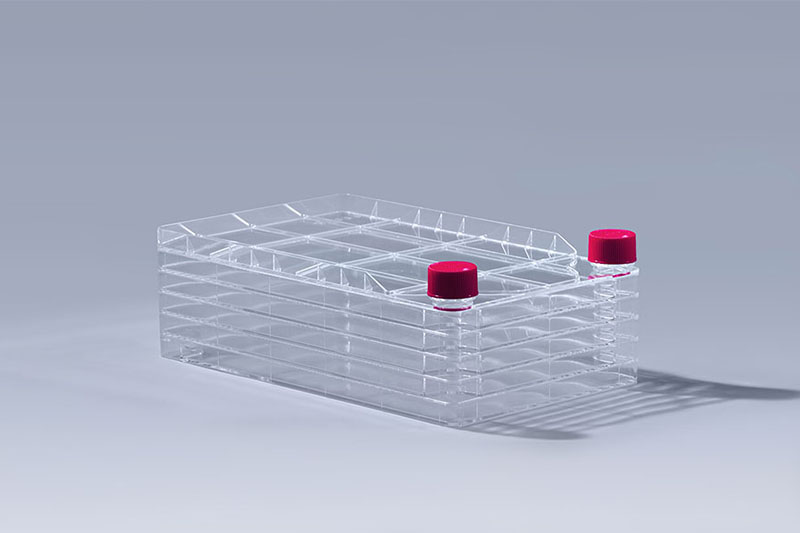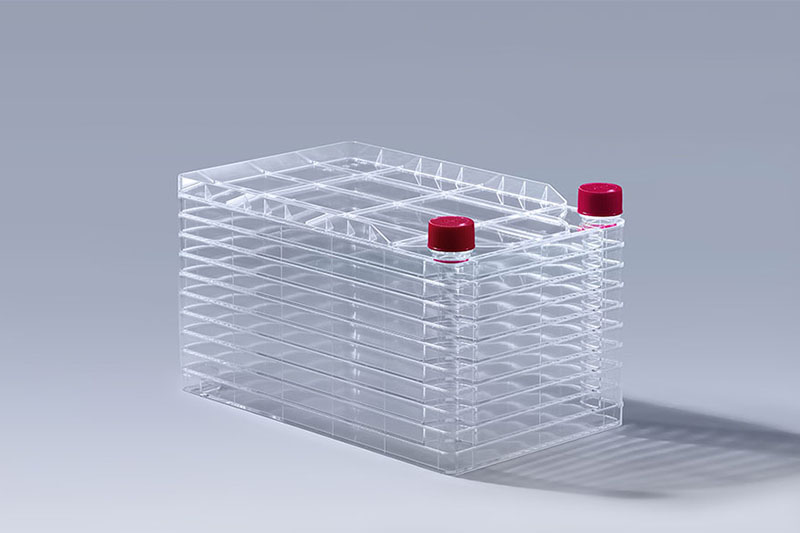When we use cell culture consumables such as cell factories, the most fearful situation is the contamination of cells in the cell factory, so we need to clarify the source and identification of the cells in the cell factory.
First of all, we need to make it clear that there are mainly the following ways to find the sources of pollution in the process of cell culture using cell factories:
1. Unclean animal tissue specimens
Many animal tissues should be sterile (except for the respiratory tract, digestive tract, and urinary system that are directly connected to the outside world), but there is a chance of contamination due to carelessness in sampling. The tissue itself contains bacteria. If the material is not washed and soaked with strong antibiotic lotion, it will also carry bacteria and cause cell contamination.
2. Air
There are a lot of microorganisms in the air. If the operating room is not strictly isolated from the outside world or the disinfection is not sufficient, it is easy to cause pollution. In addition, the purification workbench has been used for a long time, the filter plate has not been replaced regularly or has not been replaced for a long time, the filter air is blocked by dust, when working without a mask or the external air flow is too strong, polluted air enters the operating area, which will also cause pollution. In spring and summer, the southern region is rainy, the air humidity is high, and the bacteria content is high. If you do not pay attention to work, it will easily cause pollution.
3. Cleaning and disinfection
Microorganisms and toxic substances will also be introduced if the items and materials used for culture are not cleaned, and the culture fluid and equipment are not sterilized thoroughly.
4. Operation
Pollution from operators mainly includes the following aspects:
(1) The equipment and solutions have not been carefully checked for contamination before use, or whether they have been sterilized, or have been treated, but have not been reprocessed after a long time.
(2) The operator does not wear a mask or hat, and bacteria and mycoplasma are expelled from the exhaled air.
(3) The mouth of the culture bottle was not wiped and burned with 75% alcohol.
(4) The operator is not careful, and the action is incorrect, and the straw or sterile device touches the contaminated items, such as the skin on the hand and the outer wall of the bottle.
(5) The operator speaks loudly during operation, walks back and forth and raises dust, etc.
5. Serum
Commercially available sera are not completely sterilized, leading to potential virus and mycoplasma contamination.
The FAI climbed 5.9 percent year-on-year in the first 11 months of 2018, quickening from the 5.7-percent growth in Jan-Oct, the National Bureau of Statistics (NBS) said Friday in an online statement.
The key indicator of investment, dubbed a major growth driver, hit the bottom in August and has since started to rebound steadily.
In the face of emerging economic challenges home and abroad, China has stepped up efforts to stabilize investment, in particular rolling out measures to motivate private investors and channel funds into infrastructure.
Friday's data showed private investment, accounting for more than 60 percent of the total FAI, expanded by a brisk 8.7 percent.
NBS spokesperson Mao Shengyong said funds into weak economic links registered rapid increases as investment in environmental protection and agriculture jumped 42 percent and 12.5 percent respectively, much faster than the average.
In breakdown, investment in high-tech and equipment manufacturing remained vigorous with 16.1-percent and 11.6-percent increases respectively in the first 11 months. Infrastructure investment gained 3.7 percent, staying flat. Investment in property development rose 9.7 percent, also unchanged.
 English
English




















































 FuDau 10 Layers Cell Factory
FuDau 10 Layers Cell Factory